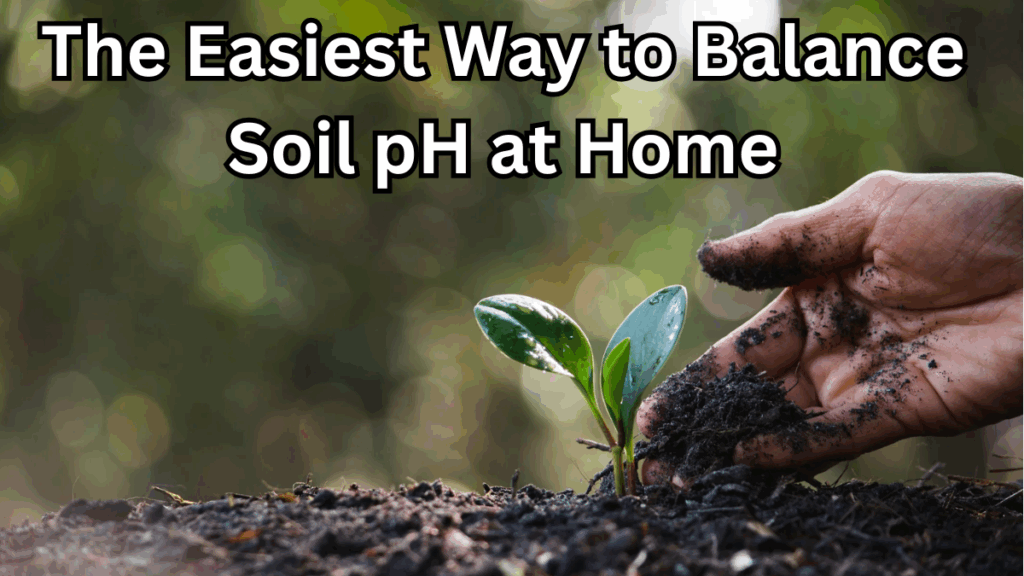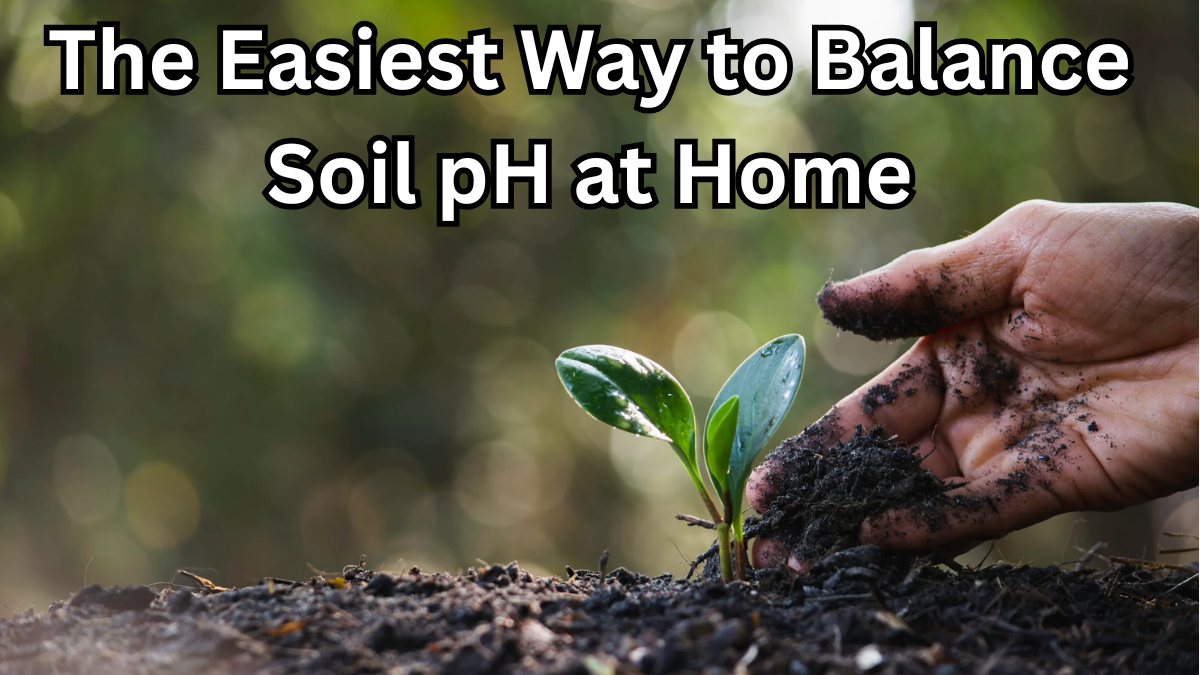Balancing soil pH is essential for healthy plant growth, but many gardeners struggle with this task. The good news is that you can balance soil pH at home safely with simple techniques and natural amendments. Understanding your soil’s pH level ensures plants can access the nutrients they need, preventing poor growth or yellowing leaves.

Why Soil pH Matters
Soil pH determines the acidity or alkalinity of your soil and affects nutrient availability. Most plants thrive in slightly acidic to neutral soil (pH 6–7). If your soil is too acidic or too alkaline, plants may struggle to absorb nutrients.
Signs your soil pH may be off:
-
Yellowing leaves or stunted growth
-
Poor fruit or flower production
-
Soil feels overly hard or sandy
Step 1: Conduct a Soil Test
Before adjusting pH, it’s crucial to know where your soil stands. A soil test is the first step in balancing soil pH at home.
-
DIY Test Kits: Available at garden stores, easy to use
-
Professional Lab Test: More accurate for larger gardens or critical crops
-
pH Range Guide:
| pH Level | Soil Type | Suitable Plants |
|---|---|---|
| 4.5–5.5 | Acidic | Blueberries, Azaleas |
| 6.0–7.0 | Neutral | Vegetables, Lawns |
| 7.5–8.5 | Alkaline | Lavender, Asparagus |
A proper soil test prevents overcorrecting pH, which can harm plants.
Step 2: Adjusting Soil pH Naturally
Once you know your soil pH, you can use safe amendments to correct it.
To Raise Soil pH (Reduce Acidity)
-
Lime: Finely ground agricultural lime is most effective
-
Wood Ash: Adds calcium and raises pH slowly
-
Dolomitic Lime: Adds magnesium along with calcium
To Lower Soil pH (Reduce Alkalinity)
-
Elemental Sulfur: Slowly acidifies soil over weeks
-
Aluminum Sulfate: Fast-acting but use sparingly
-
Organic Matter: Pine needles or composted leaves gradually lower pH
Note: Avoid myths like using vinegar or baking soda to change soil pH—they only create temporary changes and can harm plants over time.
Step 3: Apply Amendments Properly
-
Spread Evenly: Avoid clumps for uniform results
-
Water After Application: Helps amendments react with soil
-
Retest Soil: After 4–6 weeks, to check pH adjustment
Amendment Dosage Guide:
| Amendment Type | Application Rate | Notes |
|---|---|---|
| Agricultural Lime | 5 lbs per 100 sq ft | Slowly raises pH |
| Sulfur | 1 lb per 100 sq ft | Works over weeks |
| Compost | 2–3 inches thick | Moderates pH naturally |
Step 4: Maintain Balanced Soil Year-Round
-
Regularly check pH with simple kits
-
Rotate crops and add organic matter
-
Avoid overusing chemical fertilizers that can shift pH
With these practices, you can balance soil pH at home efficiently and safely, promoting healthier and more productive plants.
FAQs About Balancing Soil pH at Home
Q1: Can I use vinegar to lower soil pH?
No. Vinegar only temporarily lowers pH and can damage roots if overused. Stick to safer amendments like sulfur or compost.
Q2: How often should I test my soil pH?
Test soil at least once a year, ideally before planting season, to ensure optimal conditions.
Q3: Can lime harm my plants?
Only if over-applied. Follow dosage recommendations from your soil test for safe use.
Q4: What is the fastest way to adjust soil pH?
Elemental sulfur works over weeks, while aluminum sulfate acts faster. However, always combine with regular soil testing for safety.
Click here to learn more
